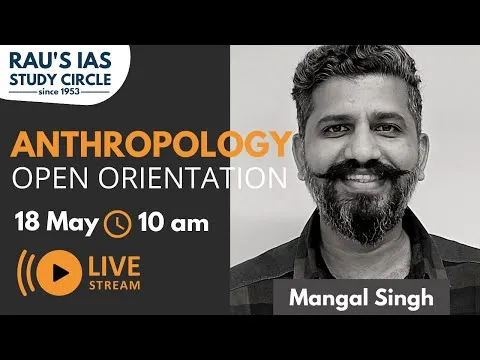
Anthropology Origins Homo sapiens 
Get a comprehesive understanding of Anthropology Origins Homo sapiens. This is a pay course from Udemy. AZ Class provides this course data for free. Learn more certificate and details here. Discover the fascinating origins of Homo sapiens in this captivating course! With a series of 8 lectures totaling approximately 75 minutes, you'll delve into the remarkable journey of how H sapiens successfully populated the earth. From the early hominin origins and migration patterns to the cognitive revolution that made H sapiens the dominant species, this course covers it all. Explore the Neolithic Revolution, the first agricultural settlements, and even the first copper smelters in Europe and the Near East. Join us on this enlightening journey and ponder the future of their ever-growing population. Click now to embark on this incredible adventure! ▼
ADVERTISEMENT
Course Feature
![]() Cost:
Cost:
Paid
![]() Provider:
Provider:
Udemy
![]() Certificate:
Certificate:
Paid Certification
![]() Language:
Language:
English
![]() Start Date:
Start Date:
2021-08-02
Course Overview
❗The content presented here is sourced directly from Udemy platform. For comprehensive course details, including enrollment information, simply click on the 'Go to class' link on our website.
Updated in [October 07th, 2023]
What does this course tell?
(Please note that the following overview content is from the original platform)
Series of 8 lectures totalling ca 75 mins on how H sapiens has so successfully populated the earthThe lectures commence on hominin origins and dispersals (migration) patterns in the late PleistoceneLecture 4 deals solely with lithic tool technology and the lecturer demonstrates how stone tools were made in an outside location Students are asked to endeavour to make a stone spearpointThe lectures explore how H sapiens became the dominant hominin spp on earth principally by the cognitive revolution The lectures then move onto the Neolithic Revolution and the first agricultural settlements on earthWe examine several prehistoric settlements in the Fertile Crescent and the first cities in Anatolia and CanaanOnce H sapiens mastered the art of agriculture and the domestication of animals he moved on to smelting copper Lecture 9 examines the first copper smelters in Europe and the Near East and how the Egyptians used copper chisels to build the pyramidsLecture 10 asks Where to from here The earths population of H sapiens has increased eight fold to 78 billion in the last two hundred years How much more population growth can the earth sustain? If every person on earth were to maintain a standard of living equal to that of people in the USA we would need four more worlds full of resources
We considered the value of this course from many aspects, and finally summarized it for you from two aspects: skills and knowledge, and the people who benefit from it:
(Please note that our content is optimized through artificial intelligence tools and carefully reviewed by our editorial staff.)
What skills and knowledge will you acquire during this course?
During this course, students will acquire the following skills and knowledge:
1. Understanding of hominin origins and dispersal patterns in the late Pleistocene.
2. Knowledge of lithic tool technology and the ability to make a stone spearpoint.
3. Understanding of how Homo sapiens became the dominant hominin species through the cognitive revolution.
4. Knowledge of the Neolithic Revolution and the first agricultural settlements on earth.
5. Familiarity with prehistoric settlements in the Fertile Crescent and the first cities in Anatolia and Canaan.
6. Understanding of the process of smelting copper and knowledge of the first copper smelters in Europe and the Near East.
7. Knowledge of how the Egyptians used copper chisels to build the pyramids.
8. Critical thinking skills to analyze the sustainability of Earth's population growth.
9. Understanding of the potential limitations and challenges of sustaining the current population growth.
10. Awareness of the resource requirements and implications of maintaining a standard of living equal to that of people in the USA.
Who will benefit from this course?
This course on Anthropology Origins Homo sapiens will benefit individuals with a keen interest in human evolution, archaeology, anthropology, and history. It will be particularly useful for students studying these subjects or professionals working in related fields.
1. Archaeologists and Anthropologists: This course provides a comprehensive understanding of the origins and dispersal patterns of Homo sapiens, as well as their cultural and technological advancements. It offers insights into the development of lithic tool technology, the Neolithic Revolution, and the first agricultural settlements. Archaeologists and anthropologists can gain valuable knowledge and perspectives to enhance their research and fieldwork.
2. History Enthusiasts: Individuals interested in the history of human civilization will find this course intriguing. It explores prehistoric settlements in the Fertile Crescent, the first cities in Anatolia and Canaan, and the use of copper in ancient civilizations. This knowledge can enrich their understanding of the past and provide a broader context for historical events.
3. Evolutionary Biologists: For those studying human evolution and genetics, this course offers insights into the origins and dispersal of Homo sapiens. It explores the cognitive revolution and the factors that contributed to the dominance of their species. Evolutionary biologists can gain a deeper understanding of the evolutionary processes that shaped modern humans.
4. Environmentalists and Sustainability Experts: The final lecture of this course raises important questions about the earth's population growth and its sustainability. Professionals working in environmental conservation and sustainability can benefit from the discussions on resource consumption and the challenges posed by population growth. This knowledge can inform their work and contribute to finding sustainable solutions.
Course Syllabus
Introduction
Lecture 2 Course Outline
Lecture 3 Human Origins & Dispersals
Lecture 4 Stone Tool Technology
Lecture 5 Homo sapiens Rules
Lecture 6 The First Farmers
Lecture 7 World's First Settlements
Lecture 8 World's First Cities
Lecture 9 The Chalcolithic (Copper Age)
Lecture 10 'Where To From Here'?
Course Provider

Provider Udemy's Stats at AZClass
Discussion and Reviews
0.0 (Based on 0 reviews)
Explore Similar Online Courses

Exploring Focus Groups in Anthropology Research

Exploring The Arts Through Cultural Anthropology

Python for Informatics: Exploring Information

Social Network Analysis

Introduction to Systematic Review and Meta-Analysis

The Analytics Edge

DCO042 - Python For Informatics

Causal Diagrams: Draw Your Assumptions Before Your Conclusions

Whole genome sequencing of bacterial genomes - tools and applications

Demo Class - Anthropology Optional Offline at Karol Bagh Drishti IAS English

Anthropology Optional Open Orientation Session UPSC CSE 2024 Raus IAS


Start your review of Anthropology Origins Homo sapiens